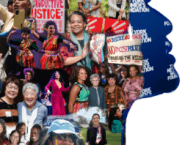Today the Sexual Violence Social Justice Group went to speak and help out with the New York City Alliance Against Sexual Assault (NYCAASA). We arrived at the office space and were lead into a conference room. We sat down and a couple minutes later we spoke with a woman who worked at NYCAASA about the project, and what sexual assault really was, and what were the root problems of all sexual violence. The woman we were speaking with was named Kira Laffe. She was extremely helpful and seemed to know everything about the filed. After we explained the social justice project, she asked us “What is social justice?” We replied that a lot of the time a social justice issue occurs to a minority and that those in that minority, are seen inferior to others. Kira went deeper and explained that most social justice issues are born when there’s unequal distribution of power. She said that we were right, and that lots of people suffering from certain social justice issues are a part of minorities and that these issues happen to keep certain minorities at the bottom, and some at the top. She said that most times, the people who have the most power are white men, “Who wrote the Declaration of Independence? A whole bunch of old white men! And we still operate to that system.” Then she asked, “Well, what’s a minority?” And she explained that a group of people become a minority when we put a label on them. “You often hear someone refer to someone as ‘That black woman’ or ‘The Chinese man’, but you almost never hear someone say ‘That white woman’.” Kira asked “Now how do we give power to the powerless? How do we make sure there’s equality? We need to take some power away from he people at the top and redistribute that power to the less empowered. But the problem is, is that the more powerful people at the top, don’t want to shed their power. Power connects to sexual violence because those who have less power, have greater risk of being victimized. If somebody identifies how much power you have, then that’s when your can often become a victim of sexual violence.” With issues concerning abortion, Kira spoke about how when the government (which obviously holds apt of power) doesn’t allow women to have abortions, they take away that power from a woman to have an abortion.
Kira was brining up so many different things we had never considered. She found a way to explain everything we needed to know about sexual violence to us in a way that connected to so many other issues concerning women. When we started speaking about rape and sexual assault more specifically, Kira said that sexual violence is often not reported because it is something that has been made to seem like a smaller problem, “We live in a society where we don’t talk about safe sexuality, that we think if we don’t talk about safe sexuality, why should we speak about violent sexuality.” She explained that another problem with reporting rape or assault occurs when the victim knows their perpetrator. She said that 80% of victims are raped/assaulted by someone they are close to and that the victim often has a difficult time speaking about their perpetrator when it’s their father, brother, boyfriend, or husbands. She said that sexual violence has become the idea that the root problem is sex, but really, “Sexual violence isn’t about sex. It’s about somebody taking away somebody else’s power.” Kira told us that victims are the second highest group of people that have post dramatic stress disorder in the US because they feel as if what happened to them was their fault, “Victims think it’s their fault. We need to explain to victims that the assaulter made a choice that had nothing to with them. That’s it’s not their fault, and that’s a really, really hard thing to hear.” Moving on to the actual perpetrators, Kira told us that most of them are normal people that have been through hard times themselves, and they don’t know how to release their anger and guilt, so they continue the cycle of rape of sexual abuse, “Most perpetrators have their own stories. So many of them have been assaulted or have had a family member assaulted by another. We learn violence. We aren’t born with it. So many perpetrators are normal people, just like us.” Kira taught us that one in three women will experience sexual assault in their life, but the center of disease says one in five women will experience sexual violence. They also say that one in 71 men will experience sexual violence. People working with the victims say that one in 7 boys will experience sexual assault. The numbers we hear from the people who are actually working with victim are far more accurate. Public health authorities are funded by the government so the government doesn’t want to admit that sexual violence is a huge problem. While regarding boys who have been sexually assaulted, Kira said “We shape kid’s identities for them. Girls can wear pants and are mostly allowed to play with you trucks. Boys can’t wear dresses or play with dolls. We are taught at a very young age that being a woman, is the worst thing to be. When boys are victims of sexual violence, they feel feminine and not like a man because they have lost control, so boys are much less likely to report sexual violence.” It is the job of parents and teachers to teach men that they can’t perpetrate women, and both boys and girls need to be taught what the difference between a healthy relationship is, and what a dangerous relationship is. We can easily teach girls that they have to be careful, but what happens when it gets beyond their control? Sexual assault.
We moved the conversation into a discussion about rape culture and slut shaming, and how the two subjects connect. Kira started off by saying, “Rape culture has very deep roots that go back to how we are sexualized. We become aware of what the ideal beauty is. Rape culture upholds the institution of sexual violence. Rape becomes the fault of the person who is raped. When people are raped, they are often asked ‘What were you wearing, and were you drunk?'” We need to stop making the victims the bad guys, and we need to start asking them who did this to them, not what did they do to make someone do this to them. When speaking about slut shaming, Kira said “Slut shaming occurs when people start labeling a woman when her skirt is too short, or if she’s wearing too much makeup.” Kira explained that youth puts so much pressure on each other so that if one doesn’t have sex or doesn’t wear provocative clothing, they’re a prude, and if they wear “sexy” clothing, drink, and flirt, they’re a slut.





